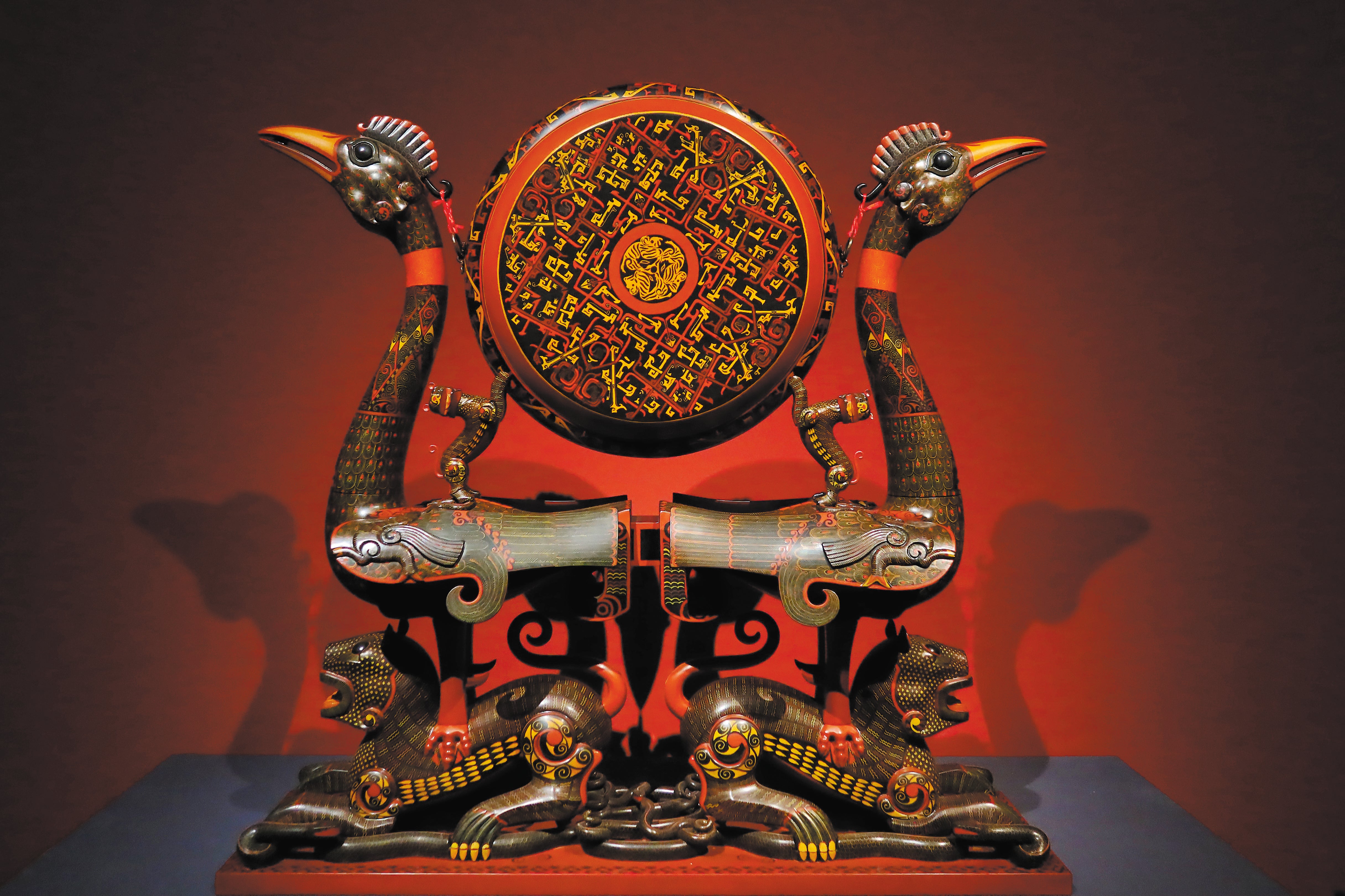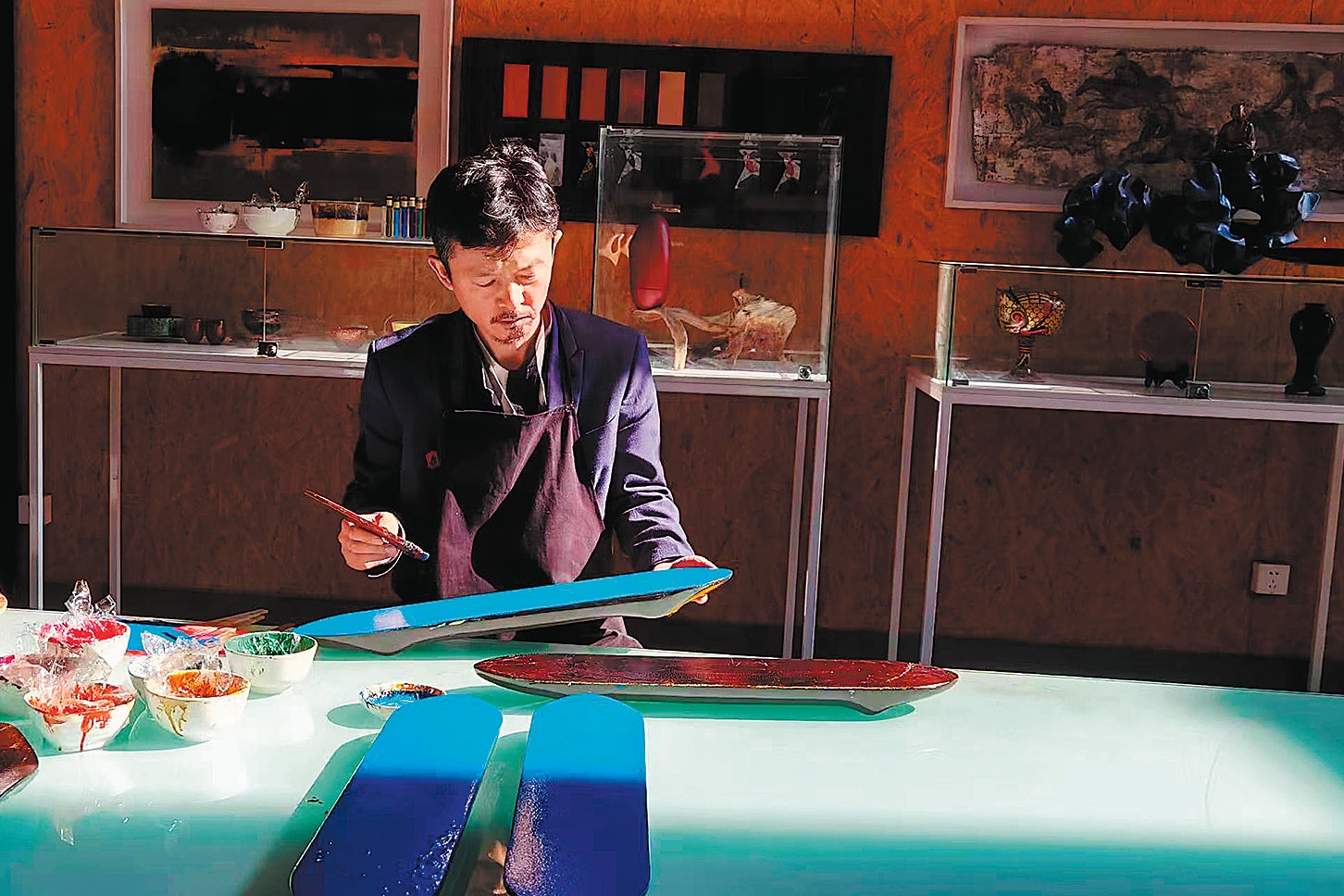Lacquer masters apply historic touch
THE ARTICLES ON THESE PAGES ARE PRODUCED BY CHINA DAILY, WHICH TAKES SOLE RESPONSIBILITY FOR THE CONTENTS

At first, it appears to just be a piece of decayed wood. No one would bother giving it a second glimpse. Not unless one is told that this object, standing no more than 2.4 inches, is of great historical significance.
This wooden piece, later identified as a bowl coated with a thin layer of lacquer, was excavated from the Hemudu site in Yuyao, Zhejiang province, in 1977. Belonging to the Neolithic period, it suggests that people living along the Yangtze River between 6 and 7 millennia ago had sourced sap from lacquer trees and used it to facilitate their daily lives.
The bowl is now part of a collection at the Zhejiang Provincial Museum in the provincial capital of Hangzhou.
The chemistry between a man’s hands and raw lacquer evolved in this land for millennia. The advances of human intelligence to utilise the juice of nature, manual dexterity and creativity have dramatically changed the appearance of lacquerwork.
Yang Ming, a celebrated lacquerer of the Ming Dynasty (1368-1644), summarised the evolution of the techniques and artistic styles in the preface for Xiushi Lu, a publication on Chinese lacquerwork written by fellow artisan Huang Cheng in the 16th century, which stated that the techniques and types “have been so well-developed and diverse, one would find it an extravagant feast for the eyes”.
Archaeological work has revealed that people began to use the fluid from lacquer trees as early as 8,000 years ago. “Because of its fine physical and chemical properties, natural lacquer as a coating material played a vital role in ancient times,” says Yang Peizhang, 47, a lacquer artist and associate professor at the Academy of Arts and Design, Tsinghua University, in Beijing.

Lacquer sap, milky and greyish when collected, turns a dark brown colour upon exposure to air. It protects objects from water, humidity and insect infestation so they are more durable. It can also be mixed with colour pigments for decorative purposes.
At Phoenix Kingdoms, an ongoing exhibition at the National Museum of China in Beijing, the splendour of lacquerwork in the late stage of the Bronze Age is showcased. “Laquer was applied, mostly on a wooden core, to make armours, vessels, plucked zithers, wine cups, ornamental objects and drums,” says Chen Keshuang, the exhibition’s curator.
The pieces on show are testimony to the height of lacquerware that would run through the 3rd century. Striking visual effects were created on an opaque lacquer-coated surface on a wooden, metal, cotton or other type of core, such as outlined patterns with other pigments, inlaid fine shells to generate light contrasts, and carved relief patterns — and sometimes gold leaf filling — to exhibit a three-dimensional effect.
This was just the beginning of ancient Chinese utilising lacquer and other materials to make wares that define timeless beauty in their living spaces. By the time lacquerers Yang Ming and Huang worked on Xiushi Lu, there had been 14 primary crafts and over 300 varieties of lacquerware.
In the book, Huang mentions one such sophisticated technique called xipi qi, in which the time-consuming process of colouring, layering and polishing ultimately assumes a dazzling pattern of multiple interlaced colours, predominantly red, yellow and black, sometimes added with other hues.
Gan Erke, 69, an esteemed artist committed to carrying on this unique lacquer style into modern times, has collaborated with luxury brands to integrate lacquerwork with new materials and designs. For example, he applied the xipi qi coating to part of a chair made of carbon fibre and a rosewood table to render “both classical and modern feelings”.
Yang Peizhang from Tsinghua University says that aesthetics have evolved and will continue to transform, and however artistry is defined, the life of lacquerwork is first grounded on the well-preserved techniques passed down and based on artists developing new techniques to carry the tradition forward.
